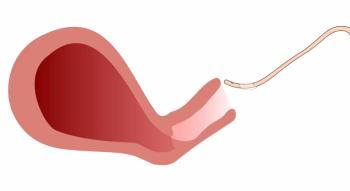
Experts call for united research assessing surgical ovarian cancer prevention
A study highlights the potential of salpingectomy to reduce ovarian cancer incidence, while experts call for international collaboration.
Collaboration between investigators of studies assessing the surgical efficacy of risk-reducing salpingo-oophorectomy toward reducing OC risk is needed to provide more sufficient evidence, according to a trial published in JAMA Network Open.1
Approximately 200,000 ovarian cancer (OC) mortalities are reported annually worldwide, leading clinical guidelines to recommend risk-reducing early-salpingectomy (RRES) followed by delayed oophorectomy (RRESDO) as a cost-effective method of reducing OC risk. However, premenopausal surgery has been linked to increased osteoporosis, heart disease, sexual dysfunction, and additional risks.
“Direct evidence on clinical effectiveness is important for policymakers for recommending RRESDO for routine clinical practice, informed counseling and surgical decision-making by patients, cost-effectiveness analysis, and guideline development,” wrote investigators.
Risk-reducing surgery assessments
A national cohort study was conducted to evaluate the efficacy of RRESDO toward preventing surgical OC. Study groups included participants receiving RRESDO, RRES alone, and no surgery. Those receiving RRES alone were able to receive delayed oophorectomy (DO) at a later time.
Participants included premenopausal women aged at least 30 years with significant OC risk and no future fertility wishes. OC incidence was reported as the primary outcome among these patients to identify superiority for RRES vs no surgery. Secondary outcomes include noninferiority of RRES vs RRSO and absolute risk of RRES.
There were 889 women aged a mean 39 years included in the analysis, 28.7% of whom were in the RRSO arm, 45.5% were in the RRES arm, and 25.7% chose no surgery. The high-risk BRCA1 and BRCA2 pathogenic variants were reported in 49.6 and 50.4%, respectively.
Key findings on ovarian cancer risk
Across a follow-up duration of 8 years, an expected OC risk of 3% was reported in the RRES group vs 4.4% in the RRSO group. At least 20% of OC was estimated to be prevented by RRES, with an absolute risk reduction from 3% to under 2.4%. According to investigators, this is sufficient evidence indicating the efficacy of RRESDO vs no surgery.
For RRSO, the reduction in risk was at least 28%. Slightly reduced power for these procedures toward cancer prevention was reported in sensitivity analyses with assumption from the BOADICEA model.
Investigators also highlighted additional studies evaluating the clinical effectiveness of RRESDO. This includes the TUBA-WISP-2 trial, which includes cancers detected at surgery and assesses follow-up before surgery. As OC is diagnosed at surgery and before the procedure has any effect, differences in risk after RRES and before DO may be masked.
Additional research needed
In comparison, the SOROCk trial utilizes different intercurrent events and testing framework. Postmenopausal women are also included, and analysis is planned based on accumulated events.
Overall, these results highlight ongoing studies assessing the efficacy of RRESDO toward reducing OC risk. However, investigators concluded there is a need for collaborations between investigators of international studies to harmonize analysis estimands.
“This approach will help to increase precision and understanding about the clinical effectiveness of RRES,” wrote investigators.
Advantages of early OC detection
The accessibility of OC treatment options is reduced when the condition is diagnosed at advanced stages.2 However, recent advancements in screening through the use of machine learning models indicated a potential method of earlier detection, as highlighted by Jesus Gonzalez Bosquet, MD, PhD, associate professor at The University of Iowa.
Gonzalez Bosquet and his team assessed the efficacy of these models through a platform starting with over 850,000 methylation probes, narrowed to 9 probes that showed a strong potential for accurately identifying ovarian cancer. However, Gonzalez Bosquet noted these are pilot findings and require additional validation.
“The idea is to put a finalized model in a web so anybody can upload [an ultrasound]… and it will give a certain risk of cancer or not,” said Gonzalez Bosquet.
References
- Sia J, Lane EF, Fierheller CT, et al. Estimands for clinical effectiveness of risk-reducing early salpingectomy in women with high risk of ovarian cancer. JAMA Netw Open. 2025;8(9):e2532195. doi:10.1001/jamanetworkopen.2025.32195
- Gonzalez Bosquet J. Jesus Gonzalez Bosquet, MD, PhD, highlights test for earlier ovarian cancer detection. Contemporary OB/GYN. September 9, 2025. Accessed October 3, 2025. https://www.contemporaryobgyn.net/view/jesus-gonzalez-bosquet-md-phd-highlights-test-for-earlier-ovarian-cancer-detection.
Newsletter
Get the latest clinical updates, case studies, and expert commentary in obstetric and gynecologic care. Sign up now to stay informed.















